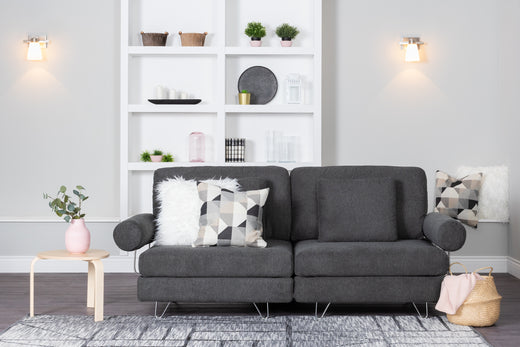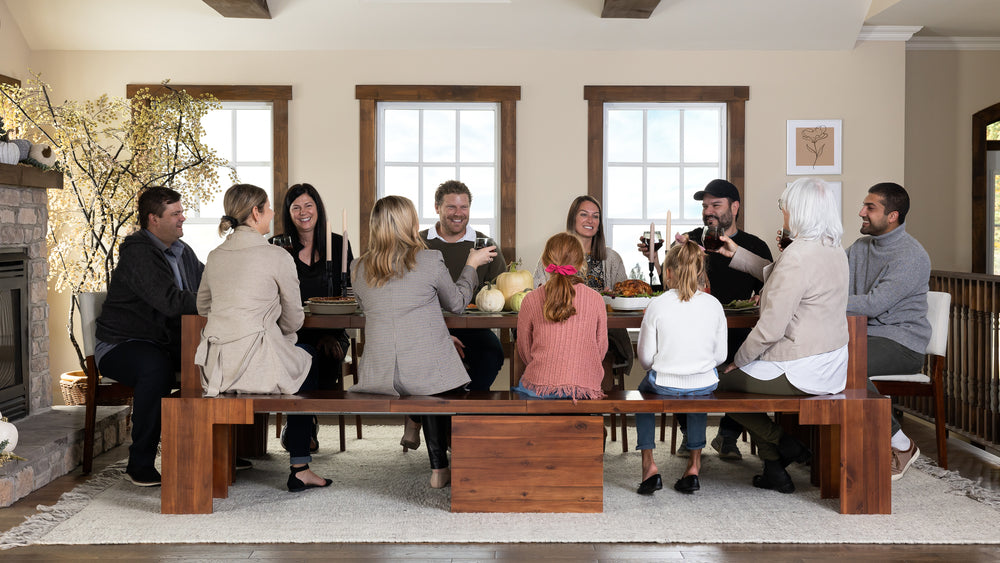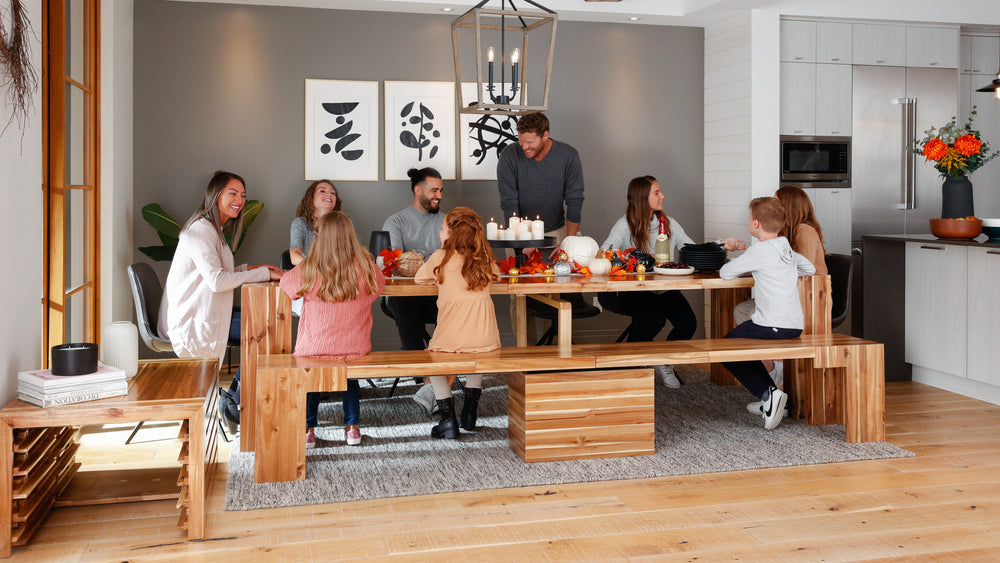
Decorating Mistakes That Date Your Home
November 02, 2023
Home Decor and Decorating Mistakes

When planning and arranging their living spaces, homeowners frequently fall into the trap of making home decor and decorating mistakes. These errors may provide an environment that is less pleasant, imbalanced, or unusable/ It is possible to create a beautifully designed and welcoming living area that reflects your taste and improves your daily life by being aware of these frequent blunders and approaching home décor thoughtfully.

We've done the work on what needs to be avoided and incorporated into your home to assist and aid taking the first step toward the dream of a comfortable and stylish home.
-
Not Varying Accent Color
The lack of variation in accent colors can cause a number of design and aesthetic problems in a home. Accent colors are essential in interior design because they give a room interest, depth, and individuality.
Here are some problems that may occur if accent colors are not changed:
Dull and monotonous: A monotonous atmosphere can be produced in a home by using the same accent color throughout. If there isn't any variety, the area may feel dull and uninspiring.
Missing of Feature Areas: feature colors are frequently employed to highlight particular architectural or design qualities in a space. There are no focus areas to draw the eye and anchor the design without a variety of accents.
Failure to Contrast: Using different accent colors provides a chance to contrast and draw attention to the primary color scheme. Lack of contrast can make the space appear flat and lifeless.
To remedy these issues, consider:
Try experimenting with other tones and tints that match the primary color scheme while enhancing the visual appeal.
Accessorize with a variety of accents, add art, carpets, throw pillows, and even painted accent walls.
Diverse accent colors can enhance the overall design and give each area a more dynamic and inviting vibe when used carefully.
-
Displaying All Your Antiques and Collectibles

Antiques and collectibles can be a good way to show off your distinctive taste and give the room charm.
However, there are a few potential problems and difficulties with showing these things:
Fragility: Antiques and collectibles are frequently fragile and prone to harm. They may deteriorate or break if you place them in high-traffic areas or locations where they are exposed to direct sunlight, dampness, or temperature changes.
Clutter: Displaying too many pieces in one location might give off a cluttered, disorganized appearance that takes away from the beauty and individuality of each piece.
Protection & Theft: Priceless antiques and artifacts can make for desirable targets for thieves. Displaying such objects in plain view could be dangerous if you live in a neighborhood where security is a worry or have a lot of visitors.
Consider the following applicable solution to deal with these problems:
Proper Storage: For priceless and delicate things, think about spending money on display cases or storage options that can shield them from airborne contaminants, dampness, and potential mishaps.
Rotation: To keep the display looking new and to avoid clutter, you might want to frequently rotate the things on show if you have a sizable collection.
Protection: To guard against any loss or damage, think about insuring priceless antiques and artifacts.
Frequent Upkeep: To keep the goods you have on display in good shape, give them routine cleanings and attention.
-
Keeping Old Wallpaper
Depending on its condition and the preferences of the homeowner, keeping old wallpaper in the home might pose a number of problems and difficulties.
Here are some typical issues with holding onto previous wallpaper:
Degradation: Wallpaper can deteriorate over time as a result of exposure to light, humidity, and everyday wear and tear. Old wallpaper may have faded or developed stains, which reduces its aesthetic value.
Tough Removal: Old wallpaper can be difficult and time-consuming to remove, especially if it was put incorrectly or has multiple layers. The procedure can harm the wall's surface or call for expert help.
Reduced Home Value: Outdated or damaged wallpaper could be viewed negatively by prospective buyers when evaluating the property, which could lower its resale value, especially in modern times.
Issues with Mold and Humidity: If the wallpaper has been exposed to moisture or humidity, it could result in the growth of mold underneath the wallpaper, which can be hazardous to the structural integrity of the wall and indoor air quality.
Here are some solutions to solve these problems if you opt to keep outdated wallpaper:
Continuous Upkeep: To prevent dust accumulation and maintain the wallpaper in the best condition possible, clean and maintain it on a regular basis.
Update Surrounding Décor: To better match the current wallpaper and produce a more unified effect, update the surrounding décor, including furnishings, accessories, and paint colors.
Layers: To produce a smooth surface, make sure the existing wallpaper is in good condition before adding a layer of new wallpaper or painting over it if you want to cover the old wallpaper but are unwilling to remove it.
Expert Consultation: For guidance on how to work with the current wallpaper and incorporate it into your overarching design idea, speak with qualified interior designers or wallpaper specialist.
-
Displaying Sofas with Fringe or Tassels
Displaying sofas with fringes or tassels can give a room a touch of elegance and charm.
However, there are a few potential problems and things to think about as well:
Cleaning & Upkeep: As opposed to streamlined, streamlined designs, sofas with fringes or tassels can be more difficult to clean and maintain.
The fringes may collect dust, filth, and pet hair, necessitating more frequent cleaning.
Style: Sofas with fringes or tassels offer a very traditional or retro appearance.
The fringed sofa could not go with the rest of the décor if your home's interior design is more contemporary or minimalist.
Longevity: Tassels and fringes can be delicate and prone to damage, particularly in high-traffic areas or houses with dogs and small children.
They might get torn or destroyed over time, which would impact how the sofa looks as a whole. Check out Modular Couch to add a more modern feel to your home.
Consider the following advice to deal with these problems:
Placement and Use: To minimize wear and tear, keep sofas with fringes or tassels in formal living rooms or areas where they will be used less frequently.
Decorate in harmony: If you choose a fringed sofa, make sure it blends nicely with the room's general design and aesthetic. To create a harmonious setting, counterbalance the ornate appearance with other design components.
Frequent Upkeep: To keep the fringes and tassels looking their best, be careful about cleaning and maintaining them.
-
Using Textures on Walls

The interior design of a home can be given depth, interest, and a distinctive touch by using textures on the walls.
There are however a few possible concerns and drawbacks with applying texture to walls that could prevent it from being all the rage:
Drawbacks of too much texture:
Limited Flexibility: Changing or removing a texture after it has been placed to the walls can be difficult and expensive.
This lack of adaptability could make it difficult for you to adjust the décor or accommodate shifting design trends.
Difficulty with Application: Textured finish applications demand skill and knowledge.
Doing projects yourself could produce a texture that is uneven or undesirable, necessitating the help of a professional or interior designer.
Cleaning Challenges: Textured walls might be a bit more difficult to clean than smooth, flat walls.
The crevices can become clogged with dust, grime and other matter, making routine cleaning labor-intensive and a burden to your life.
Consider the following advice to deal with these problems:
Choose the Proper Texture: While selecting textures, keep in mind how they may affect the room's overall aesthetics and your personal design preferences.
First test the samples: Test out small samples of textures on the walls before deciding on one to see how they seem in various lighting situations and how they work with your décor.
-
Buying Patterned Sofas or Loveseats
Although patterned couches or sofas can give a distinctive and fashionable touch to a home, you should think about any potential problems before bringing them into your living area.
The use of patterned couches or sofas in the home can lead to a number of typical problems. These problems can be, but are not limited to:
Time and trends: It is important to consider the age and time we live in and the trends that go with it. Buying a patterned sofa or loveseat can shorten its lifespan and force you to replace it more frequently to keep up with shifting fashions.
Notwithstanding these possible shortcomings, patterned sofas or loveseats can surely be complementary to some interior design themes and add a distinctive touch to your house.
When deciding whether to use a patterned couch, be sure to carefully study the available alternatives for the pattern, size, and color, taking into account both your own taste and the general aesthetic of other accessories in your house.
-
Using Dated Furniture
Depending on the situation and the exact items involved, using outdated furniture might create a number of difficulties and problems.
Here are some typical issues brought on by utilizing outdated furniture:
Condition and structural integrity: Older furniture may have experienced more wear and tear over time, resulting in decreased durability. Squeaks, creaks, and significant safety risks can occur from this.
The accessibility of new components: If a piece of outdated furniture needs repair, it may be difficult or even impossible to locate new components, especially if the maker is no longer in operation.
To address existing issues, consider the following alternatives:
Consider updating or refurbishing the worn-out furniture to conform to the present-day aesthetic and functional requirements to address these problems.
A new coat of paint, new furniture, or small repairs can occasionally make a big impact.
Check out Transformer Dining Set to add less dated furniture to your home.
-
Buying Matching Furniture Sets
There are a number of potential problems to think about before purchasing matching furniture:
Limitations: Furniture sets typically come in a limited range of styles, hues, and designs.
You might not be able to discover the exact set that fits your preferences if you have a certain idea in mind for your home's interior.
Lack of individuality: Because matching furniture sets are frequently mass-produced, your home may end up looking like many others that have the same set.
A matching set might not be the ideal option if you favor a distinctive and varied home look.
Not having compatibility with pre-existing furniture: If you already have some furniture, a matching set might not go well with your current décor, creating a disconnected look.
Use the following alternatives for existing issues:
Choose separate items that go well together and reflect your personal style.
Implement furnishings from various collections can be mixed and matched to create an eclectic effect.
Check out our selection of modular couches to get inspiration for choosing the ideal sofa.
-
Pushing Furniture Against the Walls

It's standard practice to push furniture up against walls, especially in smaller rooms where it can give the impression of a bigger, more open area. Check out How to Make a Small Living Room Look Bigger to assist with furniture placement.
However, there could be a few mistakes with this technique:
Adopt floating furniture: Pulling certain furniture away from the walls can give the space more dimension and visual appeal. A more appealing and lively environment can be produced by floating furniture in the middle of the room.
Arrange conversation area: this can be done by arranging the seating and coffee table in a way that allows individuals to comfortably face one another and promotes conversation.
Take into account the following different furniture configurations to solve these problems:
Adopt floating furniture: Pulling certain furniture away from the walls can give the space more dimension and visual appeal.
A more appealing and lively environment can be produced by floating furniture in the middle of the room.
Decide on functional zones for the space, such as a reading nook, entertainment area, or work corner. Then, place furniture in each zone as needed.
-
Using Too Many Colors and Patterns
Too many colors and patterns used throughout the home can lead to a number of problems that may affect the room's general coherence and aesthetic attractiveness.
These potential issues are listed below:
Accidental clashing: Combining various colors and patterns without giving it significant thought can result in conflicts and clashes in the final design.
There could be an unpleasant and startling effect when certain colors and patterns are combined.
Upkeep and durability: Bold colors and trendy patterns may rapidly go out of style, leaving the living room looking outmoded.
Furniture and décor replacements can be costly and time-consuming.
Consider the following for integrating colors and patterns in the home to solve these problems:
Create an integrated color scheme: Decide on a basic color scheme that can be used all across the house. This brings everything together while allowing for different complementary colors and tones.
Use colors that are neutral as a foundation: Most spaces should have a background of neutral hues.
Neutrals offer a flexible base and make it simpler to add color pops through accessories light fixtures and artwork.
-
The Use of Popcorn Ceilings

For its acoustic qualities and capacity to conceal flaws, popcorn ceilings, also known as acoustic or textured ceilings, gained popularity in the middle of the 20th century.
However, there are mistakes and concerns connected to popcorn ceilings:
Artful: Popcorn ceilings, which are outdated and can give a house a dated appearance, are not aesthetically pleasing.
Many homeowners want ceiling treatments that are smoother and more contemporary.
Paint Challenges: Popcorn ceilings can be challenging to paint, and if done incorrectly, the texture may absorb paint unevenly or peel off.
Reduced Lighting Quality: The space may feel darker and less appealing as a result of the textured surface's potential to cast shadows and lower the room's overall lighting efficiency.
Homeowners have a number of alternatives for addressing these problems:
Removal: To reveal a smoother ceiling surface, popcorn ceilings can be taken down. However, this procedure could be time-consuming and dirty.
If the ceiling contains asbestos, it might also require testing for it and its removal.
Enveloping: Adding a fresh coating of drywall or ceiling tiles to cover the popcorn ceiling is an additional alternative.
Without removing anything, this method offers a surface that is refreshed and smooth.
Popcorn ceiling removal will actually be dependent on your personal tastes, your financial situation, and the overall design objectives for your home.

